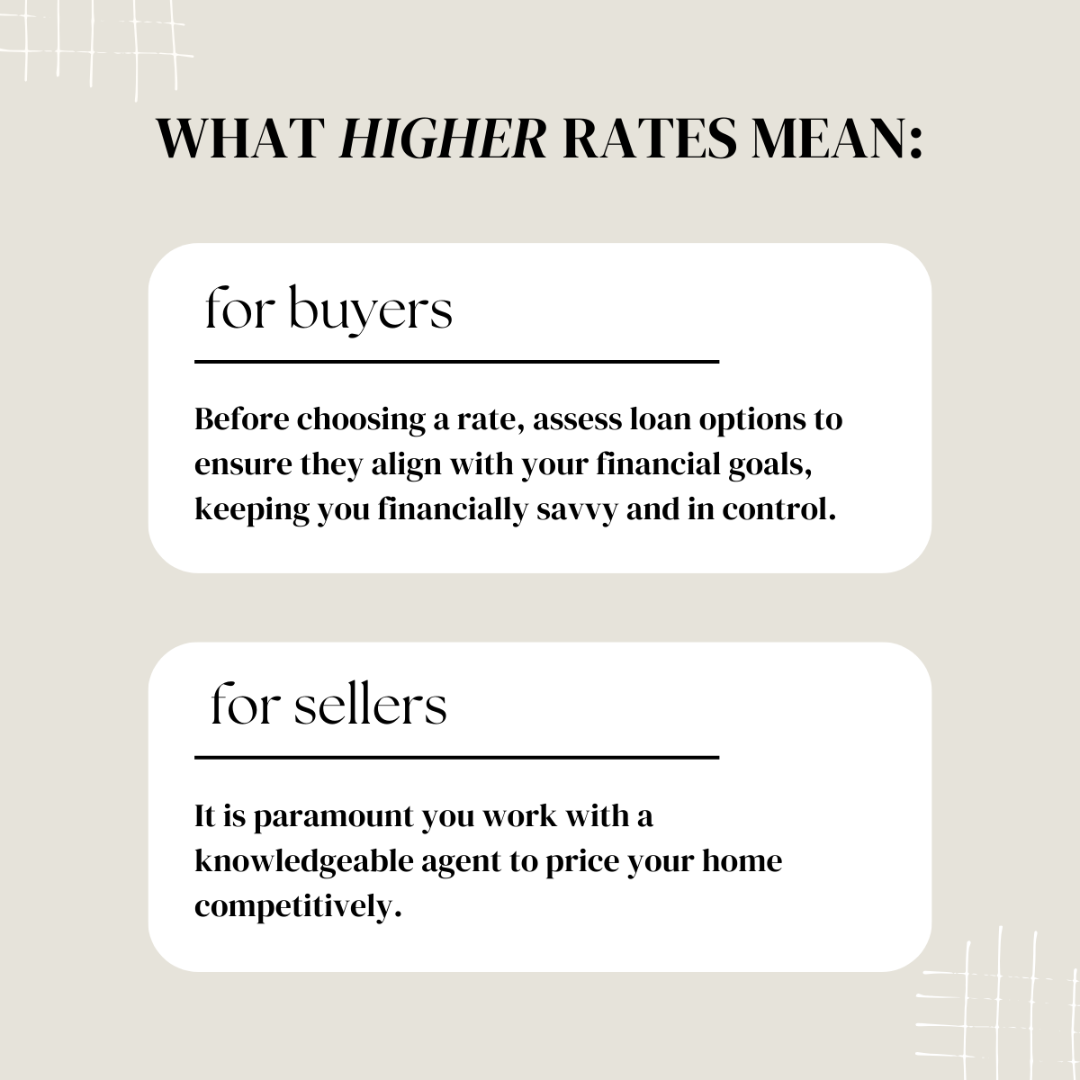In the world of real estate, interest rates play a pivotal role in shaping the dynamics between buyers and sellers. As rates fluctuate, they can have significant implications for both parties involved in a transaction. In this blog post, we’ll explore what higher rates mean for buyers and sellers alike, and how they can navigate these changes effectively.
For Buyers:
- Increased Mortgage Costs: When interest rates rise, the cost of borrowing money to finance a home purchase also increases. This means higher monthly mortgage payments for buyers, potentially reducing their purchasing power and influencing the affordability of homes in their desired price range.
- Impact on Affordability: Higher rates can make homes less affordable for some buyers, particularly those on tight budgets or with limited savings for a down payment. As a result, buyers may need to adjust their expectations, explore different financing options, or reconsider their timeline for purchasing a home.
- Potential for Competitive Market: In a rising rate environment, some buyers may feel pressure to act quickly to lock in lower rates before they climb even higher. This can lead to increased competition among buyers, potentially driving up prices and creating a more competitive market environment.
- Importance of Financial Preparedness: Higher rates underscore the importance of financial preparedness for buyers. This includes having a solid credit score, sufficient savings for a down payment and closing costs, and a thorough understanding of one’s budget and financial limitations.
For Sellers:
- Impact on Buyer Demand: Higher interest rates can dampen buyer demand by reducing affordability and increasing the cost of financing a home purchase. As a result, sellers may experience fewer offers and potentially longer days on market as buyers adjust their purchasing decisions in response to higher rates.
- Pricing Considerations: Sellers may need to adjust their pricing strategies to account for changes in market conditions driven by higher rates. This may involve pricing homes more competitively to attract buyers, offering incentives or concessions, or being flexible with negotiation terms to close a deal.
- Importance of Presentation and Marketing: In a more competitive market environment, sellers need to ensure their homes stand out and appeal to potential buyers. This includes staging the property effectively, highlighting its unique features and amenities, and leveraging targeted marketing strategies to reach qualified buyers.
- Potential for Timing Considerations: Sellers may need to consider the timing of listing their homes in relation to changes in interest rates and market conditions. While rising rates may pose challenges, they can also create opportunities for sellers who are proactive and strategic in their approach to selling their homes.
In conclusion, higher interest rates can have significant implications for both buyers and sellers in the real estate market. By understanding these implications and adapting their strategies accordingly, buyers and sellers can navigate changing market conditions with confidence and achieve their respective goals in the buying and selling process.


 Facebook
Facebook
 X
X
 Pinterest
Pinterest
 Copy Link
Copy Link


